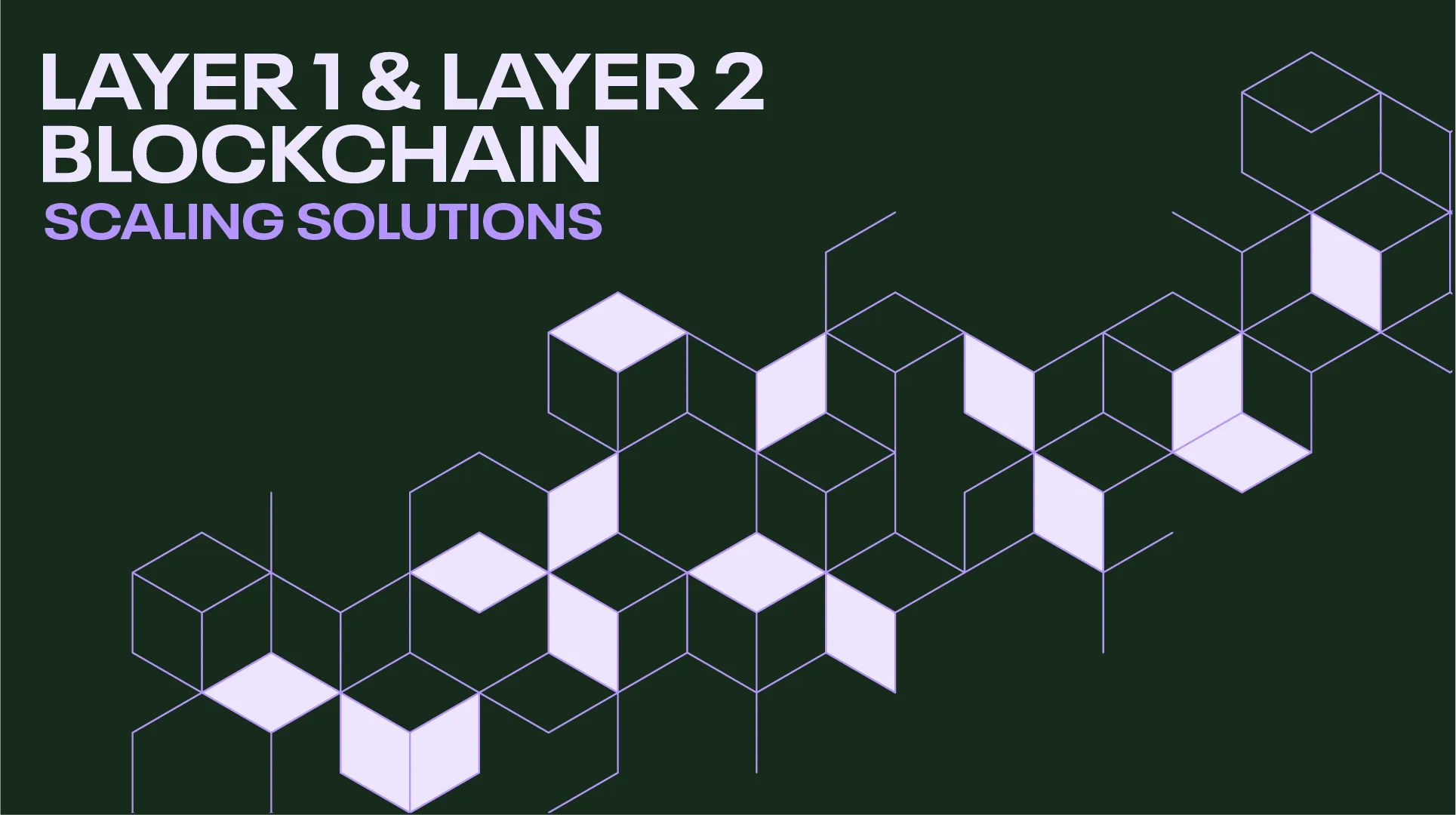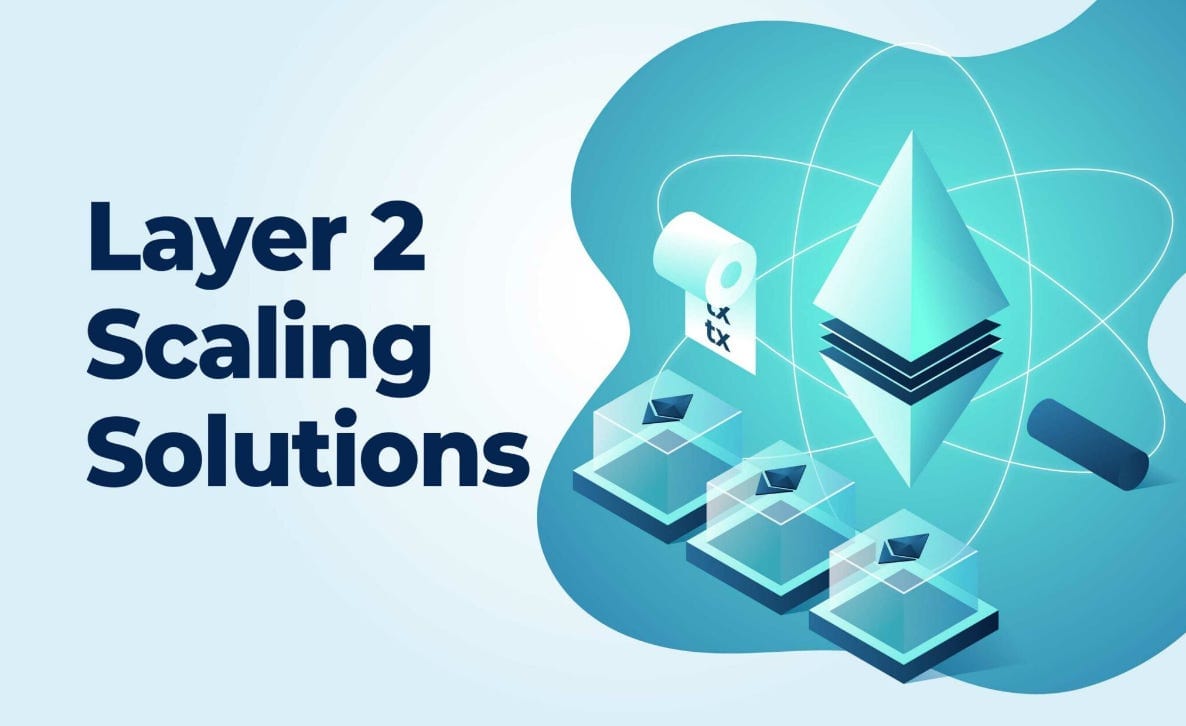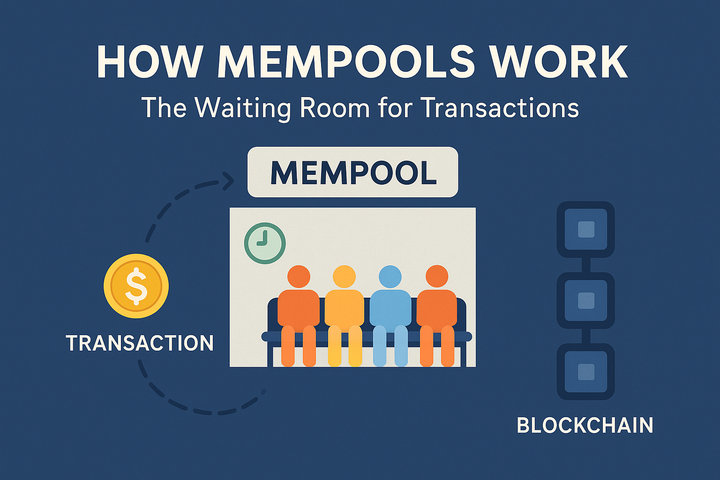Layer 1 and Layer 2 Scaling Solutions: Powering the Future of Blockchain

As blockchain technology gains traction across industries, scalability remains a critical challenge. The ability to process a high volume of transactions quickly and cost-effectively is essential for widespread adoption. Layer 1 and Layer 2 scaling solutions represent two distinct approaches to addressing this challenge, each with unique mechanisms, trade-offs, and implications. This article provides a comprehensive overview of Layer 1 and Layer 2 scaling solutions, their mechanisms, examples, challenges, and future potential, supported by recent references.
Understanding Blockchain Scalability
Blockchain scalability refers to a network’s ability to handle increasing transaction volumes while maintaining speed, security, and decentralization. the core tenets of blockchain technology, often referred to as the “blockchain trilemma.” Bitcoin, for instance, processes approximately 7 transactions per second (TPS), while Ethereum handles around 15–30 TPS, compared to traditional payment systems like Visa, which can process thousands of TPS. Scaling solutions aim to bridge this gap without compromising the decentralized and secure nature of blockchains.
Layer 1 Scaling Solutions
Layer 1 (L1) scaling solutions involve modifications to the base protocol of a blockchain to improve its throughput, efficiency, or capacity. These solutions directly enhance the underlying architecture of the blockchain, often requiring consensus among network participants to implement changes.
Mechanisms of Layer 1 Scaling
- Block Size Increase: Increasing the block size allows more transactions to be included in each block. For example, Bitcoin Cash, a fork of Bitcoin, increased its block size to 32 MB to enable higher throughput compared to Bitcoin’s 1 MB limit.
- Consensus Mechanism Optimization: Transitioning to more efficient consensus algorithms can boost scalability. Ethereum’s shift from Proof of Work (PoW) to Proof of Stake (PoS) with Ethereum 2.0 reduced energy consumption and increased transaction capacity.
- Sharding: Sharding divides the blockchain into smaller partitions called shards, each capable of processing transactions independently. Ethereum’s planned sharding implementation aims to significantly increase its TPS by distributing the workload across multiple shards.
- Transaction Compression: Techniques like Segregated Witness (SegWit) for Bitcoin optimize transaction data storage, allowing more transactions to fit within a block without altering its size.
Examples of Layer 1 Blockchains
- Ethereum: Ethereum’s transition to PoS and its ongoing sharding efforts aim to improve scalability while maintaining security and decentralization.
- Solana: Solana uses a Proof of History (PoH) mechanism combined with PoS to achieve high throughput, reportedly exceeding 50,000 TPS in ideal conditions.
- Cardano: Cardano employs a layered architecture and the Ouroboros PoS protocol to enhance scalability and support smart contracts efficiently.
Advantages of Layer 1 Scaling
- Fundamental Improvements: Changes at the base layer ensure long-term scalability without relying on external systems.
- Network-Wide Impact: Enhancements benefit all applications and users on the blockchain.
- Decentralization Preservation: Layer 1 solutions maintain the blockchain’s core principles of security and decentralization.
Challenges of Layer 1 Scaling
- Implementation Complexity: Protocol upgrades often require hard forks or significant coordination, which can lead to network splits or delays. For example, Ethereum’s transition to PoS faced years of development and testing.
- Centralization Risks: Increasing block sizes or altering consensus mechanisms may favor nodes with higher computational power, potentially reducing decentralization.
- Compatibility Issues: Upgrades may break compatibility with existing applications, requiring developers to adapt.
Layer 2 Scaling Solutions
Layer 2 (L2) scaling solutions operate on top of the primary blockchain, offloading transaction processing to secondary protocols while leveraging the security of the Layer 1 chain. These solutions aim to improve speed and reduce costs without altering the base protocol.

Mechanisms of Layer 2 Scaling
- State Channels: State channels allow parties to conduct transactions off-chain and settle the final state on the main chain. Bitcoin’s Lightning Network is a prime example, enabling fast and low-cost Bitcoin transactions.
- Rollups: Rollups bundle (or “roll up”) multiple transactions into a single batch, processing them off-chain and submitting a compressed proof to the Layer 1 chain. There are two main types:
- Optimistic Rollups: Assume transactions are valid unless challenged, as used by Arbitrum and Optimism, achieving up to 4,000 TPS with significantly reduced fees (e.g., 95% fee reduction compared to Ethereum’s mainnet).
- Zero-Knowledge Rollups (ZK-Rollups): Use cryptographic proofs to verify transactions, offering higher security and efficiency. Examples include zkSync and StarkNet.
- Sidechains: Independent blockchains linked to the main chain, sidechains process transactions separately but can interact with the Layer 1 chain. Polygon’s Proof of Stake chain is a popular Ethereum sidechain.
- Plasma: Plasma chains are hierarchical structures that process transactions off-chain and periodically submit summaries to the main chain, though they face challenges with data availability and user experience.
Examples of Layer 2 Solutions
- Lightning Network (Bitcoin): Facilitates rapid, low-cost Bitcoin transactions by processing them off-chain and settling on the Bitcoin blockchain.
- Arbitrum and Optimism (Ethereum): These optimistic rollup solutions enhance Ethereum’s scalability, handling thousands of TPS while reducing gas fees.
- zkSync and StarkNet (Ethereum): ZK-rollup solutions that combine high throughput with cryptographic security, ideal for DeFi and NFT applications.
- Eclipse (Ethereum): A Layer 2 rollup integrating Solana’s Virtual Machine (SVM) for high throughput while leveraging Ethereum’s security.
Advantages of Layer 2 Scaling
- No Protocol Changes: Layer 2 solutions do not require altering the base blockchain, avoiding the need for hard forks or consensus changes.
- Cost Efficiency: Off-chain processing significantly reduces transaction fees, making blockchain applications more accessible.
- Scalability Boost: Layer 2 solutions can handle thousands of TPS, enabling blockchain applications to support more users and data.
- Maintained Security: Layer 2 protocols inherit the security of the underlying Layer 1 chain, ensuring trustlessness.
Challenges of Layer 2 Scaling
- Complexity: Developing and interacting with Layer 2 solutions can be technically complex, requiring users and developers to adapt to new systems.
- Data Availability: Some Layer 2 solutions, like Plasma, struggle with ensuring data availability, which can limit their usability.
- Interoperability: Different Layer 2 solutions may not seamlessly interact, creating fragmented ecosystems.
- Security Trade-Offs: While Layer 2 solutions leverage Layer 1 security, vulnerabilities in off-chain protocols (e.g., optimistic rollup fraud proofs) can pose risks.
Layer 1 vs. Layer 2: A Comparison
Aspect | Layer 1 | Layer 2 |
|---|---|---|
Definition | Modifications to the base blockchain protocol | Protocols built on top of the base blockchain |
Examples | Ethereum PoS, Solana, Cardano | Lightning Network, Arbitrum, zkSync |
Scalability Approach | Increase block size, sharding, consensus changes | Off-chain processing, rollups, state channels |
Advantages | Fundamental improvements, network-wide impact | No protocol changes, cost-efficient, scalable |
Challenges | Complex upgrades, centralization risks | Technical complexity, data availability issues |
TPS Potential | Hundreds to thousands (e.g., Solana: 50,000 TPS) | Thousands to millions (e.g., MegaETH: 100,000 TPS) |
Impact on Stablecoin Adoption
Layer 1 and Layer 2 scaling solutions are critical to the adoption of stablecoins, which require fast, low-cost transactions to compete with traditional payment systems. For instance, Ethereum’s high gas fees have historically hindered stablecoin transactions, but Layer 2 solutions like Arbitrum and Optimism have reduced costs by up to 95%, making stablecoins like USDC and DAI more viable for remittances and DeFi applications. Similarly, Solana’s high-throughput Layer 1 architecture supports stablecoin transactions with minimal latency, enhancing their use in emerging markets.
The Future of Blockchain Scaling
The future of blockchain scalability lies in a hybrid approach combining Layer 1 and Layer 2 solutions. Ethereum’s roadmap, for example, integrates sharding (Layer 1) with rollups (Layer 2) to achieve millions of TPS while maintaining decentralization. Emerging solutions like MegaETH, with sub-millisecond latency and over 100,000 TPS, push the boundaries of Layer 2 performance. Additionally, cross-chain interoperability protocols and advancements in zero-knowledge cryptography will further enhance scalability and user experience.
However, challenges remain. Regulatory scrutiny, particularly around stablecoin transactions on scalable blockchains, could impact adoption. Moreover, balancing scalability with decentralization and security will require ongoing innovation and community consensus.
Conclusion
Layer 1 and Layer 2 scaling solutions are transforming blockchain technology, enabling it to compete with traditional financial systems. Layer 1 solutions like Ethereum’s PoS and Solana’s PoH provide foundational improvements, while Layer 2 solutions like Arbitrum, zkSync, and the Lightning Network offer immediate scalability and cost reductions. Together, they address the blockchain trilemma, paving the way for mass adoption in applications like stablecoins, DeFi, and beyond. As the ecosystem evolves, continued research and development will be crucial to overcoming technical and regulatory hurdles.
References
- Advancing Blockchain Scalability: An Introduction to Layer 1 and Layer 2 Solutions. (2024).
- Layer-1 And Layer-2 Blockchain Scaling Solutions. (2023).
- A Survey of Layer-Two Blockchain Protocols. (2023).
- Investigating Layer-2 Scalability Solutions for Blockchain Networks.
- The Rise of Layer 2 Scaling on Ethereum.
- Layer 1 & Layer 2: All You Need to Know. (2022).
- Layer 2 Scaling Solutions for Blockchains. (2024).
About Mitosis:
Mitosis APP
Blog
Docs
X
Discord



Comments ()